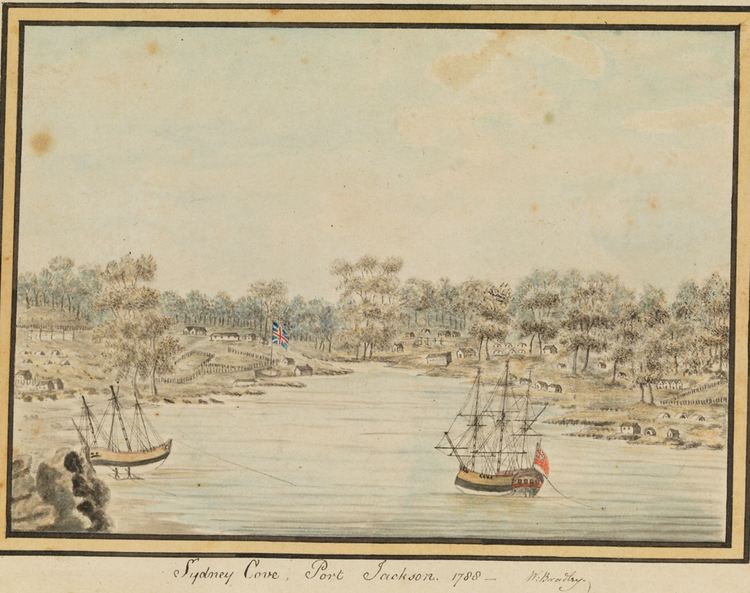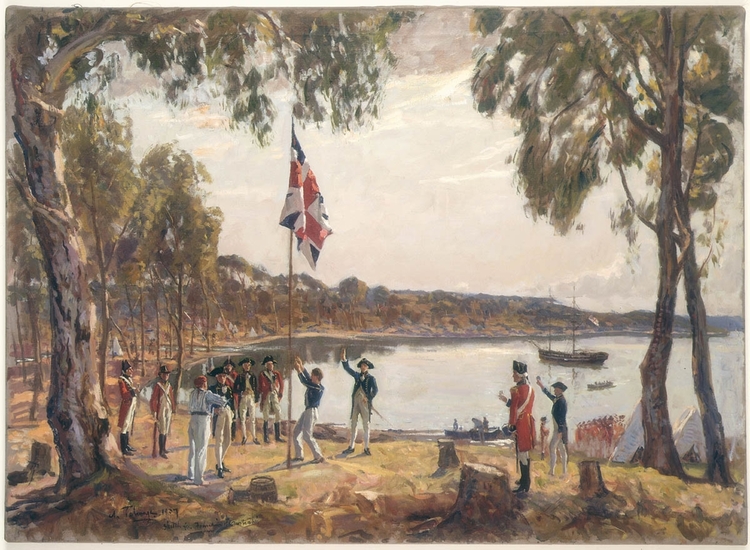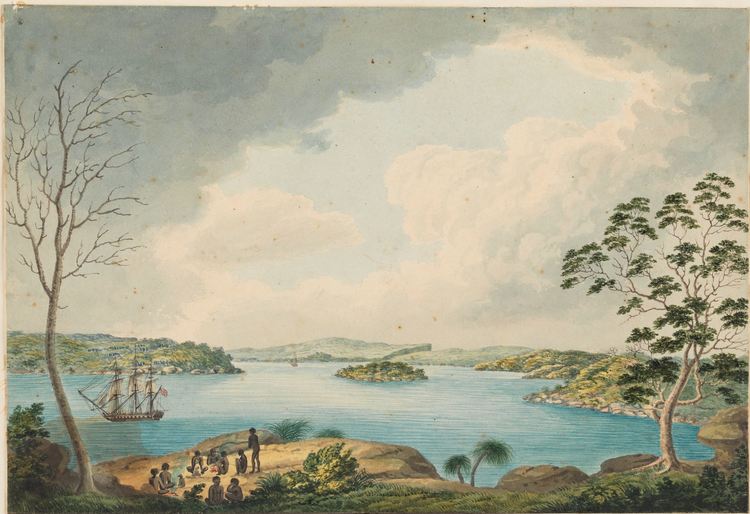Arrival of Europeans
In 1770, Indigenous Australians, including the Bidjigal People and People of the Dharawal nation to the south, encountered European ships for the first time, with the arrival of the HMS Endeavor under Lieutenant James Cook. Cook and his crew had entered (and named) Botany Bay as they undertook a mission that included charting the east coast of Australia for His Majesty, King George III.
Once inside Botany Bay, a landing party led by Cook headed for the shore in longboats. They were met by two men from the Gweagal clan of the Dharawal nation, standing on the southern banks of the Bay. The visitors signalled their intention to land, waving and throwing trinkets. However, the landing was opposed with stones and spears thrown toward the longboats. Cook then loaded and fired a musket, wounding one of the men and causing them to retreat.
The crew spent the next eight days and nights replenishing their supplies, collecting plants and attempting to interact with the local people. For the most part, the local people ignored or avoided Cook and his men. Despite attempts to establish a connection or to invite trade, gifts that the crew left behind were declined.
The crew of the Endeavour were baffled as to why they were not acknowledged. As the ship’s botanist, Joseph Banks recorded:
“These people seemd to be totaly engag’d in what they were about: the ship passd within a quarter of a mile of them and yet they scarce lifted their eyes from their employment; I was almost inclind to think that attentive to their business and deafned by the noise of the surf they neither saw nor heard her go past them”.
Long after the Endeavour returned to Britain, Banks testified before two parliamentary committees that “Botany Bay” would be an “advantageous” site for a new penal colony. His reasons included the area’s botanical qualities, including fertile soils, abundant trees and grasses.
In January 1788, a fleet of 11 ships arrived, bringing the first European settlers to Australia from England. It was made up of two Royal Navy vessels, three store ships and six convict transports. Under the command of Captain Arthur Phillip, over 1400 people -consisting of convicts, marines, sailors, civil officers and free settlers- had travelled for over 250 days for the purpose of establishing a penal colony.
After just a couple of days in Botany Bay, it was soon realised that Botany Bay did not live up to the glowing accounts of Cook and Banks. The bay was open and unprotected, the water was too shallow to allow the ships to anchor close to the shore, fresh water was scarce, and the soil was poor.
Captain Arthur Phillip and a small party of men departed Botany Bay in three small boats to explore other bays to the north. They soon discovered that Port Jackson, about 12 kilometres to the north, was an excellent site for a colony with sheltered anchorages, fresh water and fertile soil. Cook had seen and named the harbour, but had not entered it. Phillip's impressions were recorded in a letter he sent to England later: "the finest harbour in the world, in which a thousand sail of the line may ride in the most perfect security..."
On the 26th of January, the full fleet then sailed to Port Jackson, now more commonly known as Sydney Harbour. The site selected for anchorage had deep water close to the shore, was sheltered, and had a small stream flowing into it. Phillip named it Sydney Cove, after Lord Sydney, the British Home Secretary. The British flag was planted and formal possession taken in the name of the British monarch.
Although the official policy of the British Government was to establish friendly relations with Aboriginal people, and Arthur Phillip ordered that the Aboriginal people should be well treated, it was not long before conflict began. The colonists did not establish treaties with the original inhabitants of the land. Between 1790 and 1810, Pemulwuy of the Bidjigal clan led the local people in a series of attacks against the colonists.
-
The Story of Jack Spriggins and the Enchanted Bean
-
Sun, Moon, and Talia
-
The Enchanted Frog
-
The Queen's Croquet-Ground
-
Nenillo and Nennella
-
Blackbeard's Ghost
-
The True History of Little Golden-Hood
-
The Dullahan
-
Three Sisters
-
The Mirror of Current Events, or Beauty to the Highest Bidder
-
The Legend of Saint Galgano



